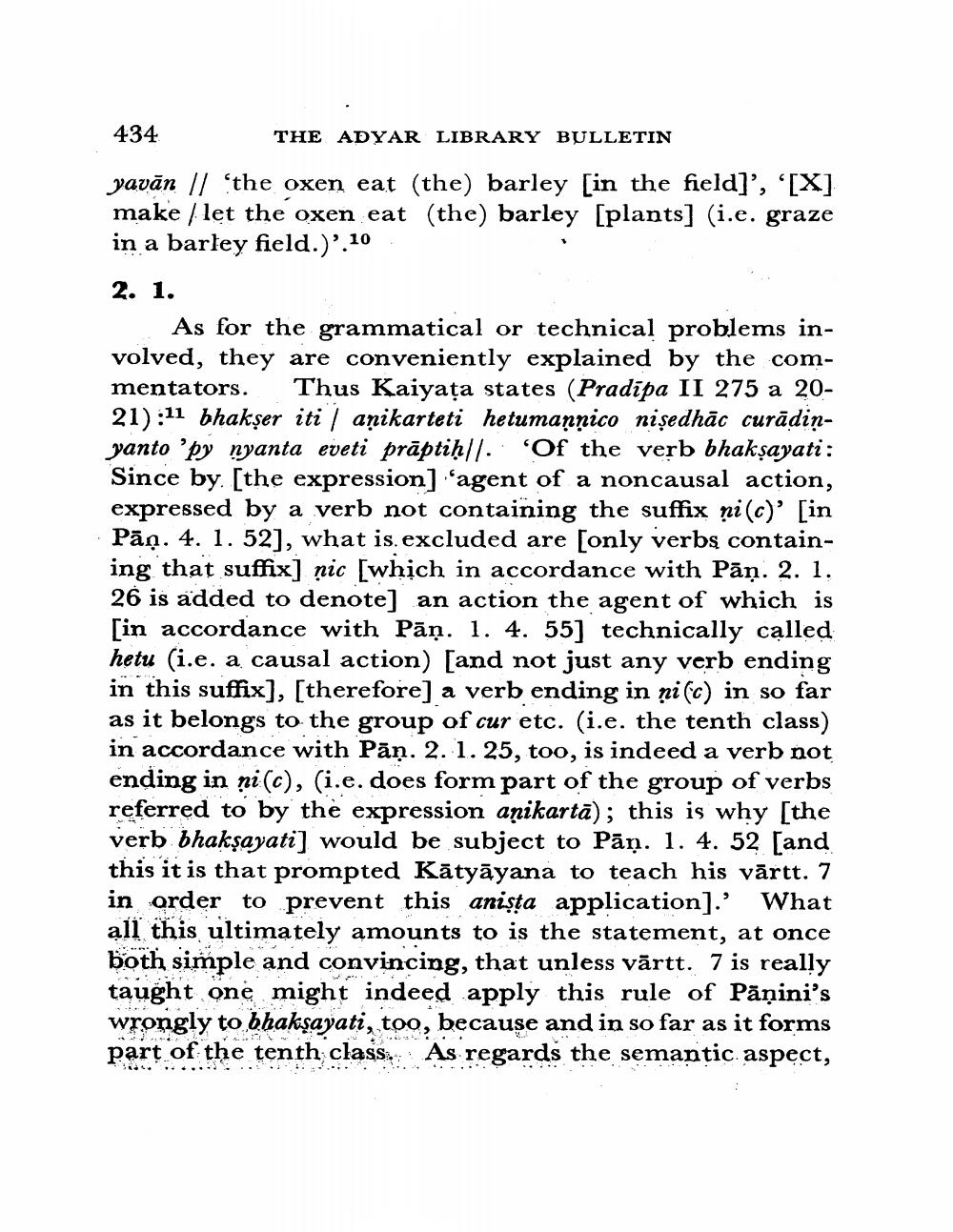Book Title: Cattle Field And Barley Note On Mahabhasya Author(s): A Wezler Publisher: A Wezler View full book textPage 4
________________ 434 THE ADYAR LIBRARY BULLETIN yavān // 'the oxen eat (the) barley [in the field]', '[X] make / let the oxen eat (the) barley [plants] (i.e. graze in a barley field.)'.10. 2. 1. As for the grammatical or technical problems involved, they are conveniently explained by the commentators. Thus Kaiyața states (Pradipa II 275 a 2021):11 bhakşer iti / asikarteti hetumaņņico niședhāc curădinyanto 'py nyanta eveti prāptiḥ||. . 'Of the verb bhakşayati: Since by [the expression) 'agent of a noncausal action, expressed by a verb not containing the suffix ni(c)' in Pān. 4. 1. 52), what is excluded are only verbs containing that suffix] nic [whịch in accordance with Pāņ. 2. 1. 26 is added to denote] an action the agent of which is [in accordance with Pāṇ. 1. 4. 55] technically called hetu (i.e. a causal action) [and not just any verb ending in this suffix], [therefore] a verb ending in ņi(c) in so far as it belongs to the group of cur etc. (i.e. the tenth class) in accordance with Pāṇ. 2. 1. 25, too, is indeed a verb not ending in ņi(c), (i.e. does form part of the group of verbs referred to by the expression aşikartā); this is why (the verb bhakşayati] would be subject to Pān. 1. 4. 52 [and this it is that prompted Kātyāyana to teach his vārtt. 7 in order to prevent this anista application].' What all this ultimately amounts to is the statement, at once both simple and convincing, that unless vārtt. 7 is really taught one might indeed apply this rule of Pāņini's wrongly to bhakşayati, too, because and in so far as it forms part of the tenth class. As regards the semantic aspect,Page Navigation
1 2 3 4 5 6 7 8 9 10 11 12 13 14 15 16 17 18 19 20 21 22 23 24 25 26 27 28 29 30 31 32 33 34 35 36 37 38 39 40 41 42 ... 47
